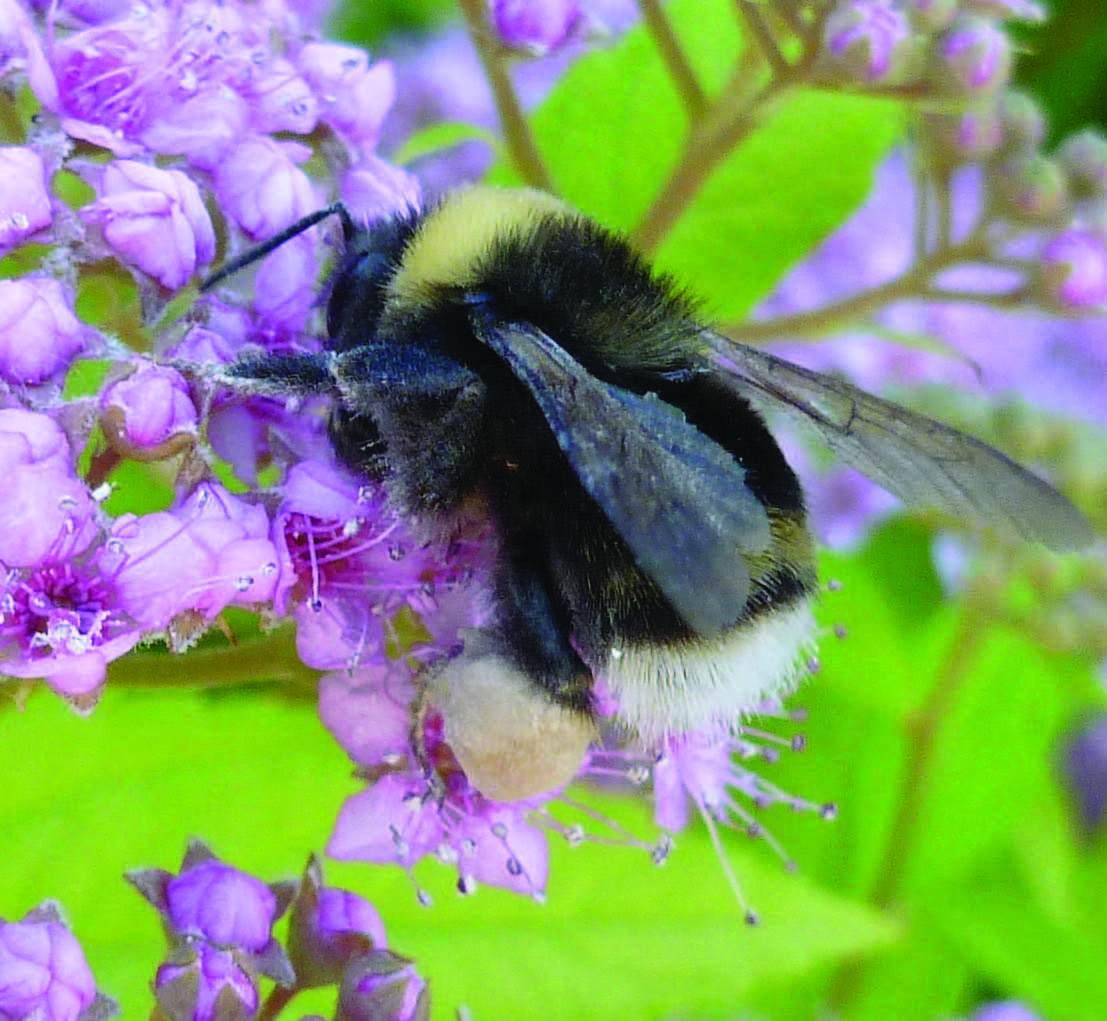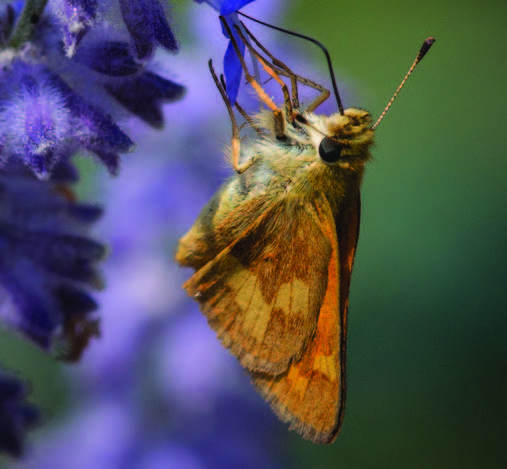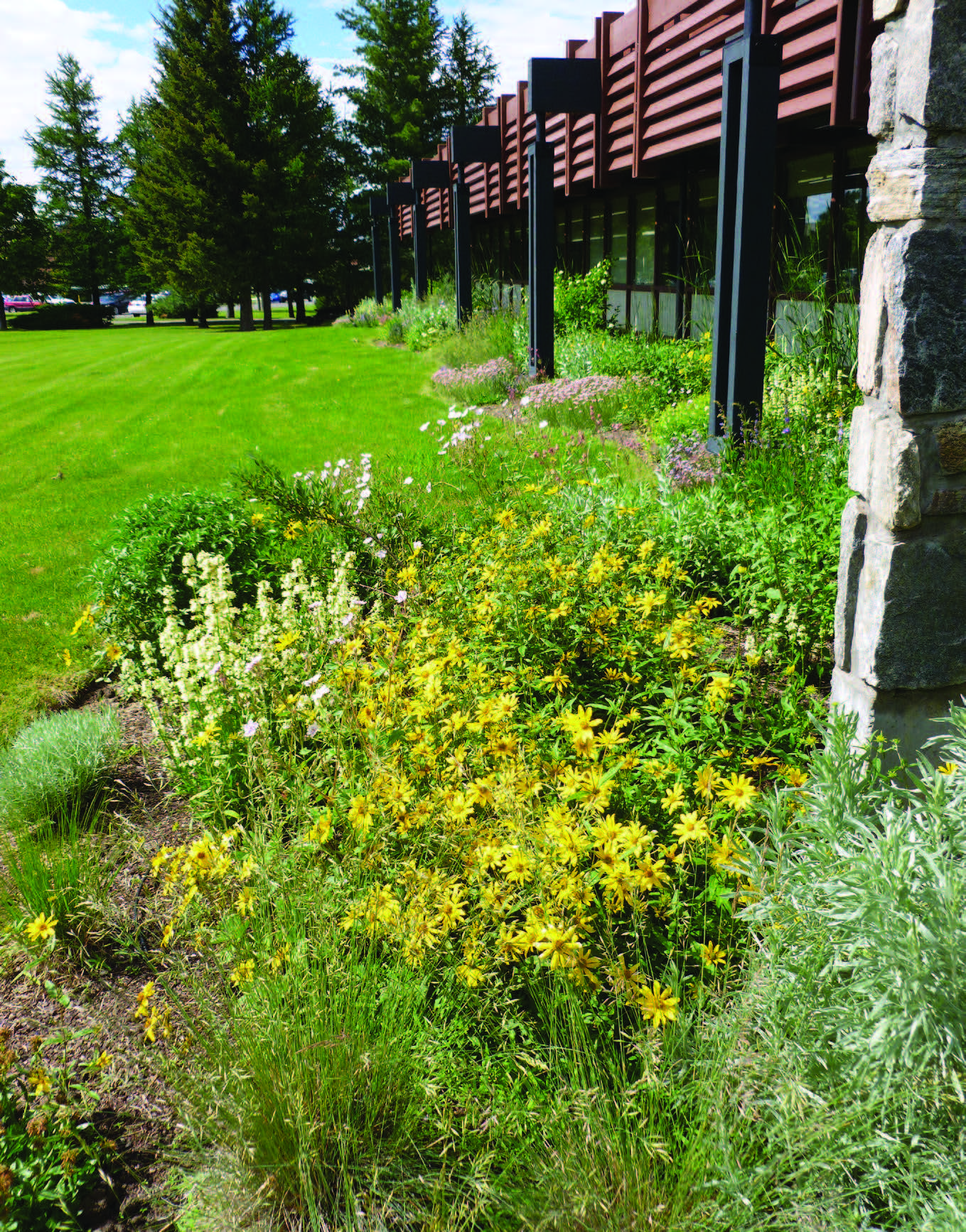Building and Maintaining a Pollinator-Friendly Garden Landscape
In Montana, we have a plethora of pollinators that call the various ecosystems, agricultural lands, and urban areas across the state “home.” These pollinators play important roles in the pollination of agricultural crops and other flowering plants that help sustain native plant diversity and ecosystem functions.
Habitat loss and fragmentation due to urbanization and agricultural intensification have led to a reduction in suitable pollinator-friendly habitat in many regions across the state. Our landscaping practices may also be counterintuitive when we think about pollinators, including our wild native bees, butterflies, moths, flies, and the various other beneficial organisms that visit our gardens throughout the season.
Just like us, pollinators need a few basic things to survive and thrive. They need food, a place to live, and protection from practices that can harm them (such as improper/unnecessary pesticide use). Creating a garden with wildlife (including pollinators) in mind can seem like a daunting task for some, but with a few tips, this is something that many gardeners can easily build in their home landscapes.



Left to Right: Northern blue (Plebejus idas), Western bumble bee (Bombus occidentalis), Woodland skipper (Ochlodes sylvanoides)
Left to Right: Mary C. Legg, Bugwood.org; Casey M. Delphia, MSU; David Cappaert, Bugwood.org
PLANT A BOUQUET OF FLOWERS
One of the best ways to encourage and support a diversity of pollinators is by incorporating a diversity of flowering plants in the garden. Choose plants that vary in color, texture, shape, size, and especially bloom time in order to provide food for a variety of different pollinators. Make sure there is something blooming throughout the growing season while pollinators are actively foraging and building nests. Early and late season flowers (with spring and fall blooms) can be some of the most important food sources for pollinators, as there are fewer flowering plants available during these critical times. Reach out to local MSU Extension offices, conservation districts, and the Natural Resources Conservation Service (NRCS) offices for regional pollinator-friendly plant lists.
LEAVE YARD AND GARDEN LANDSCAPES A LITTLE ‘WILD’
One of the best ways to create a pollinator-friendly home garden landscape is by mimicking
what is found in nature. Create pollinator patches that incorporate native plants,
grasses, and woody plants with hollow and pithy stems such as Elderberry (Sambucus
spp.) and Raspberry (Rubus spp.) which can be used by cavity nesting bees for building
nests. Prune woody and pithy plants at varying heights (from 8–24 inches) and diameters
(ranging from narrower to slightly wider stems/branches) so they’re ready for cavity
nesting bees in the early spring. Keep small wooden logs, snags, and dead standing
trees in place (as long as they don’t pose a safety hazard) as these can serve as
habitat for cavity nesting pollinators and other beneficial arthropods. Leave undisturbed
areas of bare soil for ground nesting species of pollinators and limit the use of
hard mulches (such as wood chips, rocks, and plastic) which can limit pollinators
access to that soil. Consider reducing the footprint of traditional turfgrass lawn
and opt for native flowering plants, bunchgrasses, and native sedges with a clumping
habit. Hold off on that garden cleanup, and leave dead flower stalks, plant stems,
twigs, and leaf litter in designated areas. This provides nesting and overwintering
habitat for pollinators including bumble bees and butterflies. These will also naturally
break down over time and add nutrients back into the soil.
REDUCE LANDSCAPE PESTICIDE USE
Minimize practices that can harm pollinators by incorporating Integrated Pest Management (IPM) in gardening. IPM is a practice that uses a variety of tools and methods which can limit pest problems while minimizing the negative impact on the environment. Choose pollinator-friendly pest management options including selecting hardy plants resistant to common pests and diseases. This will allow limited use of landscape pesticides. When possible, avoid the use of broad-spectrum insecticides that can impact non-target insects (including pollinators), and opt for more pollinator-friendly strategies (including physical/mechanical controls such as row covers and hand-picking certain pests). As with any pesticides, it is important to read and follow label directions and continue to be informed in the ways to use them safely and effectively.
KEEP LEARNING AND EDUCATING OTHERS
One of the best ways to keep momentum in creating a pollinator-friendly landscape is by continuing to seek educational resources with the latest information on best management practices pertaining to pollinators. With increased knowledge and experience, share information or incorporate educational signage to showcase some of these pollinator-friendly gardening practices so that we can all become better stewards of these incredibly important animals.

A bumble bee friendly garden
Photo: Casey M. Delphia, MSU
|
FOR MORE INFORMATION Regional native plant lists: Nesting and overwintering habitat: Protecting pollinators in urban landscapes: |
Abiya (Abi) Saeed is the MSU Extension Horticulture Associate Specialist.
